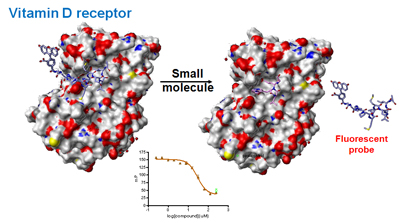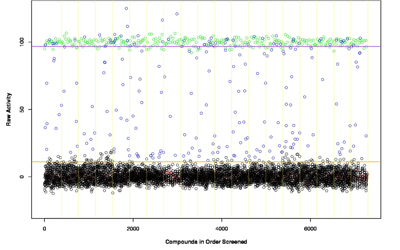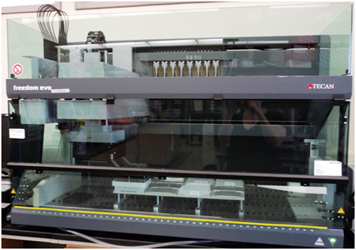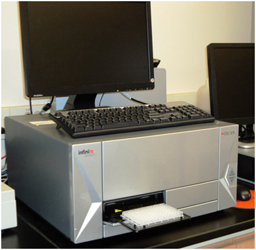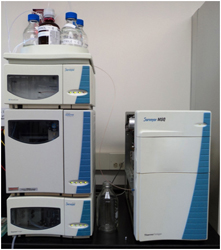
Assay Development and High-Throughput Screening
|
Fluorescence polarization was used to quantify the interaction between VDR and coregulator peptides. The fluoresence polarization signal is dependent on the physical size of fluoresent molecules and their concentrations. In our case, the application of fluoresent coregulator peptides allows the quantification of their affinity to VDR. Furthermore, we developed a competition assay to detect small moelcules that can interrupt this interaction. |
The robustness of every HTS assay can be quantified by the calculation of the Z' values. This value is dependent on the signal of the positive and negative control and their standard deviations. In general, Z' values above 0.5 are repesentive for a good HTS assay. The fluorescence polarization assay employing VDR-LBD and Alexa Fluor 647 labeled SRC2-3 peptide is giving Z' values between 0.8-0.9.
|
|
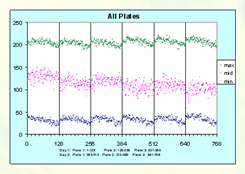 |
Reproducibility is very important to achieve consistent and reliable assay results. Six 384 well plate with high, medium, and low signal are commonly measured to determine the robustness of an assay, here fluorescence polarization.
|
A pilot screen is a common experiment used to access the performance of HTS assays. Therefore, small compound libraries with known biological activities are used that are available for commercial sources. Expected here are low hit rates (a small number of active molecules) and good separation of the positive and negative controls and small standard deviations.
|
|
Tecan Freedom Evo |
The Arnold Group performed large HTS with St. Jude Children's research Hospital and the NCGC. Hit compounds from these small molecule screens are further investigated in our facility using assays to confirm their activity but also determine their aqueous solubility, cellular permeability, protein-small molecule binding, cellular activity, liver microsome stability and other properties. Over the years we optimized and automated many assays using our Tecan Freedom Evo (see left). One assay e.g. allows the identification of electrophilic compounds within a hit compound libraries. With the use of a thiol-containing fluorescent molecule, this assay can estimate the extent to which any small molecule may bind with thiol-containing biomolecules in vivo. |
A bioactive molecule must pass many hurdles to be designated as a “good” pharmaceutical lead compound. It should have a significant activity, solubility, bioavailability, half-life, and metabolic profile. The majority of these properties are determined through pre-clinical assays prior to clinical trials to reduce costs. Our group is developing high throughput methods to determine these pre-clinical properties of hit compounds supported by the usage of the Tecan M1000, a multi-label plate reader supporting many fluorescence, luminescence and absorbance-based methods. |
Tecan M1000 |
Thermo Surveyor |
Essential for the metabolic profiling of drug candidates developed in our group is our LCMS system from Thermo Scientific. Our graduate student Megan McCallum is responsible for the maintenance of this instrument and able to troubleshoot virtually every upcoming problem. Quantifications for pharmacokinetic studies are as well supported by this instrument as the characterization of new compounds synthesized in our lab. The flexibility of this instrument makes on of the most used instruments in our lab. |

